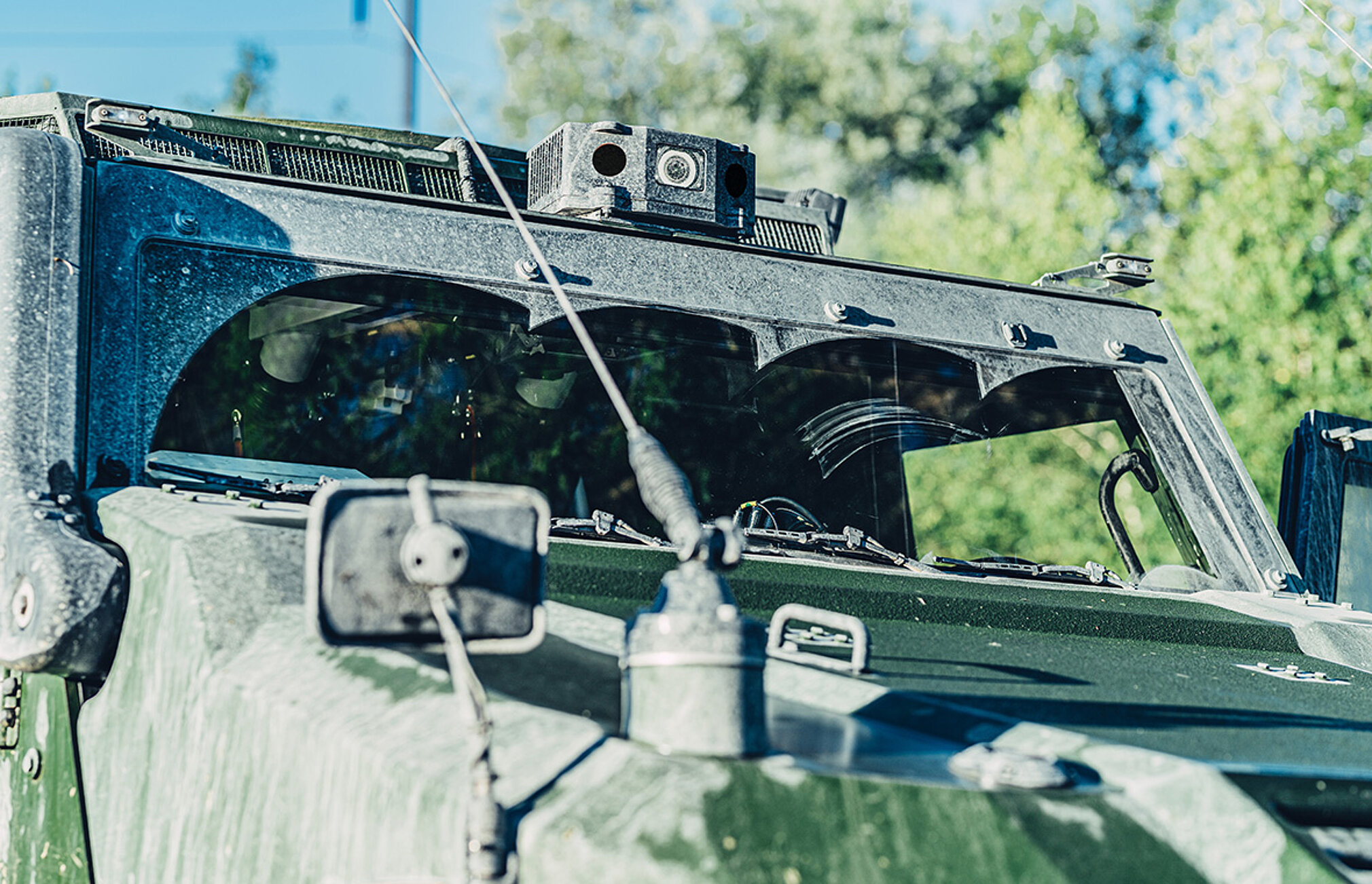SETAS – How to see through armour
The future of integrated ground vehicle sensors
Ground combat has changed significantly over the last decade. Conflicts are now more likely to be fought in urban environments – where movement and visibility is difficult for armoured vehicles – and the enemy is more adept at using asymmetric tactics to neutralise the capabilities of a modern equipped army. In this environment, how can we make vehicle crews safer?
November 03, 2021
info@hensoldt.net
CATEGORIES:
Innovation, Optronics, Situational Awareness
Background – Limited view in achanged battlefield
The design of armoured vehicles has had to adapt to an increasingly dangerous environment. As conflicts in the 21st century have shown, asymmetric tactics to destroy vehicles can include hidden improvised explosive devices, rockets, and more recently armed drones that can drop bombs from above.
To address this, modern armoured vehicles – such as wheeled 8x8s and tracked vehicles – are now extremely well protected with significant blast and ballistic protection to address a range of threats.
To achieve this level of protection, potential weak points in the hull incl. windows or firing ports are no longer fitted – with the impact of decreasing visibility. To see the outside world, crews have to rely on the limited visibility provided by optical periscopes, or open the crew hatches, which of course can be extremely dangerous.
So the challenge: How can we give all soldiers inside a vehicle the same outside view as if they were using their own eyes looking out of a hatch?
Solving the situational awareness challenge
A few years ago, a HENSOLDT engineer was pondering this exact challenge, and he knew he had the answer. Within HENSOLDT’s environment of fostering innovation and product idea generation, the engineer was able to submit his ideas and for them to go through an innovation process that would eventually lead to a concept phase, and all the way to main development.
This idea was the See-Through Armour System – or SETAS.
SETAS uses an array of high-resolution cameras – including 12 megapixel CMOS day cameras and uncooled thermal imagers – in ruggedised integrated modules situated around the hull of an armoured vehicle. This gives crew members a 360 degree view of the external environment 24 hours a day, all while remaining under cover.
“The cameras should be capable of replacing the human eye, and this is mainly about resolution,” explained Marc Krause, Product Manager for SETAS.”
Marc Krause
Product Manager SETAS
Like the human eye, the target for SETAS was to be able to recognise humans within 300m, which is critical for early threat detection and ensuring that potential threats are addressed as quickly as possible. With the high-resolution 12MP CMOS cameras, “you can detect a sniper or soldier within 300m and this gives you time to take decisions and react”, added Krause.
SETAS also includes a powerful Central Image Processing Unit (CIPU) that can process the huge amounts of imagery data being generated by the sensors, and part of this includes running complex algorithms that allows the camera feeds from each module to be “stitched” together, which gives the user a seamless 360 degree view of the external environment.

The CIPU features up to eight outputs, allowing eight crew members to view the low-latency video feed via a human-machine interface (HMI).
“HMI is just as important as all the other elements, it’s how you get the information from the sensors to the user and how to control the displayed information,” said Krause, noting that SETAS has an open architecture for HMI that allows crews to use standard display screens as well as helmet-mounted displays that give instant orientation.
The system also allows each user to have graphical overlays that assist further with situational awareness and decision making. For instance, a crew member could choose to have vehicle information overlayed on his SETAS view, giving them up-to-date information on how the vehicle is performing using the NATO Generic Vehicle Architecture (NGVA) to receive the vehicle data. Meanwhile, a soldier could have military symbols from the battlefield management system (BMS) overlaid on their view, giving them indications of enemy and friendly forces before they dismount.
Adding additional capabilities – becoming a sensor management system
HENSOLDT is continually adding features to SETAS, which will benefit vehicle crews and soldiers on the frontline. The team are working on a number of new software-enabled features, including a picture-in-picture mode and digital image enhancement. On the latter, the enhancement includes digital image stabilisation that allows crew members or remote user to concentrate on specific objects while the vehicle is moving.
Using machine learning algorithms currently hosted on an external module to the CIPU, SETAS is also capable of target identification, which reduces the workload for crew members that have to scan a wide area for potential threats. This machine learning module will be integrated into the CIPU in the future. It is also possible for customers to host their own custom algorithms if required, owing to the flexibility of the system.

In the future, SETAS will be connected with other vehicle sensors including HENSOLDT’s Multifunctional Self-Protection System (MUSS) and shot detection systems, both of which alert the crew to potential missile and ballistic threats – further increasing safety and operational advantage.
Looking ahead, SETAS will go beyond a situational awareness tool; it will become a powerful sensor management system that will connect a whole host of sensors and utilise the latest AI algorithms to give vehicle crews an unmatched capability on the battlefield. “SETAS is the first step to a sensor management system, it is so powerful and with AI you get far more information than you would from the sensors alone,” said Krause.
